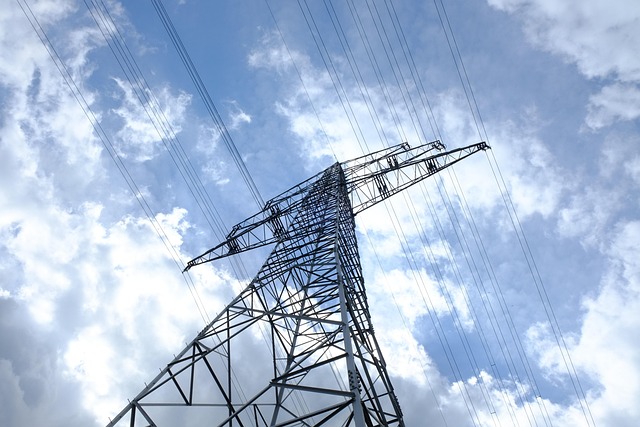Low voltage cabling (below 60V) is essential for safe and effective device connectivity in diverse environments. Different types cater to varied data transmission needs; planning and installation are crucial for optimal network performance and safety. Industrial facilities require sturdier options like Cat6a or fiber optics, while offices focus on future growth. Proper routing, high-quality components, and regular maintenance ensure reliable networks, minimizing tripping hazards and disruptions. Regular low voltage cabling maintenance maximizes efficiency and security in various settings.
In today’s digitally driven world, reliable network cabling is essential for offices, schools, and industrial facilities. This comprehensive guide explores the fundamentals of low voltage cabling, delving into its types, installation best practices, benefits, and maintenance tips. Whether you’re tasked with setting up a new network or maintaining an existing one, understanding low voltage cabling basics will ensure optimal performance and future-proof your facility’s connectivity.
Understanding Low Voltage Cabling Basics
Low voltage cabling is a fundamental aspect of modern network infrastructure, offering a reliable and efficient way to connect devices in various settings. This type of cabling system operates at reduced electrical voltages, typically below 60V, which significantly differs from traditional high-voltage wiring. By keeping voltages low, low voltage cabling ensures safer installations, especially in enclosed spaces where static electricity or arcing could pose risks.
Understanding the basics involves recognizing different types of low voltage cables, such as Ethernet cables for data transmission and fiber optic cables for high-speed connectivity. These cables are designed with specific requirements in mind, including gauge, insulation, and shielding to protect signals from interference. This knowledge is crucial when planning and implementing network cabling for offices, schools, or industrial facilities, ensuring optimal performance and minimizing potential hazards associated with electrical systems.
Types of Cabling for Different Facilities
In the context of network cabling, different facilities have distinct needs due to varying requirements in terms of data transmission speed and volume. For offices and schools, low voltage cabling like Cat5e and Cat6 is often sufficient. These types provide reliable connectivity for standard internet and telephone services while being cost-effective. Industrial facilities, on the other hand, often demand sturdier options. Here, low voltage cabling such as industrial-grade Cat6a or even fiber optics might be employed to handle high-speed data transmission, robust networking demands, and harsh environmental conditions.
The choice of cabling directly impacts network performance and future expandability. Schools may opt for a basic setup that supports current needs, while offices often consider future growth by choosing cables with higher bandwidth capabilities. Industrial facilities invest in more durable low voltage cabling to ensure continuous operations in challenging settings, like extreme temperatures or areas prone to physical damage.
Installation Considerations and Best Practices
When installing network cabling in offices, schools, or industrial facilities, several key considerations come into play. One crucial aspect is ensuring proper routing and management of cables to maintain an organized and efficient workspace. Low voltage cabling, designed for such environments, offers a range of benefits including increased flexibility and reduced tripping hazards compared to traditional high voltage alternatives.
Best practices involve using high-quality, industry-standard cable components and adhering to strict labeling protocols for easy identification. Additionally, it’s essential to consider future expansion plans by designing the network infrastructure with scalability in mind. Regular maintenance checks and timely repairs are also vital to prevent disruptions caused by worn-out or damaged cables, especially in high-traffic industrial facilities where heavy machinery can pose significant risks.
Benefits and Maintenance Tips for Network Cabling
Network cabling is a cornerstone of modern connectivity, especially in offices, schools, and industrial facilities. The benefits of low voltage cabling are manifold: it’s versatile, allowing for easy reconfiguration to meet evolving needs; it’s cost-effective, with fiber optic options delivering high-speed data transfer at lower costs than traditional copper wiring; and it’s reliable, minimizing signal degradation over long distances. This makes low voltage cabling the preferred choice for robust and efficient network infrastructure.
Maintenance is key to ensuring these benefits are realized in the long term. Regular checks for physical damage, such as frayed cables or loose connections, are essential. Environmental factors like moisture and extreme temperatures can compromise the integrity of cables, so proper installation and protection are crucial. Additionally, staying updated with industry standards and best practices ensures that any repairs or replacements use the latest technology, maintaining optimal performance and security.
In conclusion, implementing efficient network cabling systems, based on low voltage technology, is paramount for modern facilities. By understanding the basics, selecting appropriate cable types, and adhering to best practices during installation, organizations can ensure reliable and future-proof connectivity. The benefits are clear: enhanced performance, cost savings, and streamlined maintenance. Regular upkeep, including regular checks and timely repairs, will extend the lifespan of these systems, ensuring optimal network functionality for offices, schools, and industrial settings alike.
